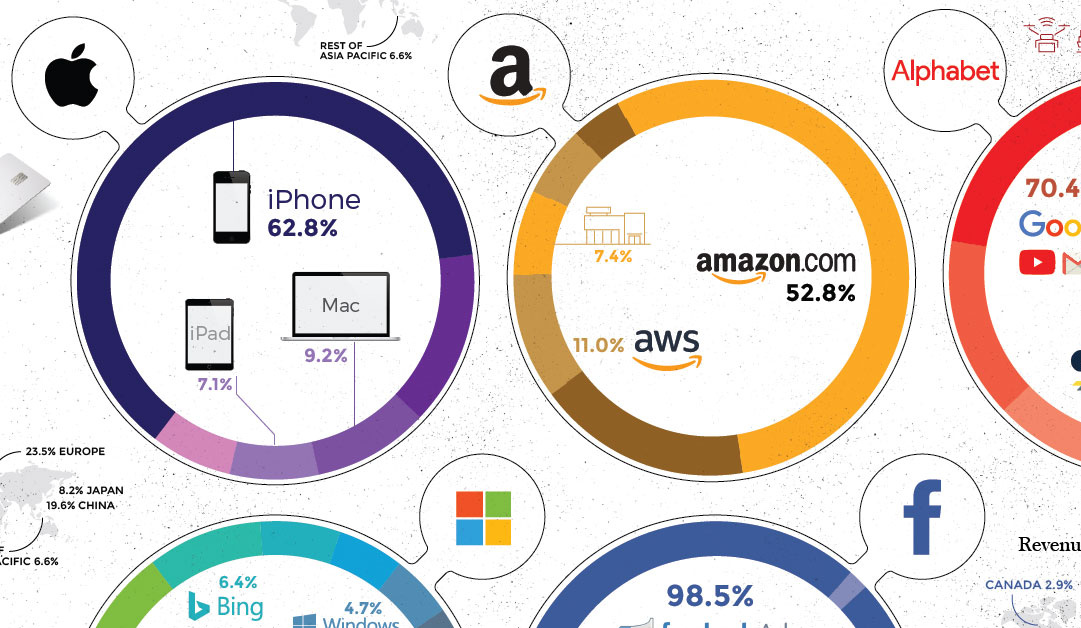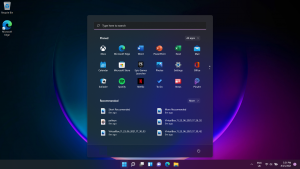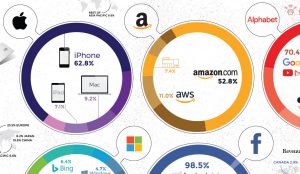
As they prepare to reopen their offices, Apple, Google, and Twitter are taking diverse approaches to flexible work practices; Microsoft’s reopening began on February 28.
Apple, Google, and Twitter have all announced reopening dates, signaling the end of widespread home working as well as the implementation of “hybrid” remote rules.
In the early phases of the COVID-19 pandemic in 2020, each company, like most others, shuttered corporate headquarters in compliance with social distancing procedures, immediately adapting to facilitate remote work.
The three IT titans have revealed their individual intentions to reopen workplaces, employing hybrid rules that include remote and in-office work for personnel, after delaying reopening numerous times due to the ongoing pandemic. The success of those programs could influence what other, smaller businesses do to deal with shifting workplace demands.
[Related: When it’s time to get back to work, technology is essential]
J. P. Gownder, vice president and principal analyst at Forrester, said, “Tech giants are operationalizing hybrid plans they’ve been working on for a long.”
Others have already started the process. Microsoft announced its reopening last month, with employees returning to its Washington state headquarters and other offices beginning Feb. 28. Microsoft’s “hybrid work adventure,” which had been in the works for nearly two years, came to a close with this announcement.
While each organization has its own strategy for reopening and establishing rules for remote and in-person work, they have all decided against returning to the pre-pandemic “normal” of all employees spending five days in the office.
The date has been set by Apple: April 11th.
Some employees have objected to Apple’s requirement that employees return to the office at least three days a week, with petitions and public demonstrations against the move last year. However, the corporation has been steadfast in its resolve to restore employees to Cupertino, even only part-time.
Apple CEO Tim Cook proposed a “phased” workplace reopening in an email to employees obtained by ‘The Verge’ last week. Staffers will be required to come into the office one day per week at first, but by the third week of the transitional phase, they will be required to come in two days per week. “On May 23, we will start the hybrid pilot in full, with individuals coming to the office three days a week — Monday, Tuesday, and Thursday — and working flexibly on Wednesday and Friday if you like,” according to the email.
Cook admitted that the necessity to return to work may not be popular with everyone, adding that while many people will enjoy the chance to see their coworkers face to face, “for others, it may also be an unpleasant transition.”
“I want you to know that we are fully dedicated to providing you with the assistance and flexibility you require in this next phase,” he added. “This commitment begins with the gradual rollout of our hybrid pilot and includes the opportunity to work remotely for up to four weeks per year.”
Google will return on April 4th.
Following a postponement of plans to reopen offices on Jan. 10 (following the discovery of the COVID-19 omicron variant), Google now aims to rehire employees on April 4, according to an internal memo seen by Reuters last week. Employees in some Google offices in the United States, the United Kingdom, and Asia-Pacific can seek for an extension if they are not ready to return to work.
According to Reuters, employees who go to work must be completely vaccinated against COVID-19 or have a recognized exemption, while unvaccinated individuals will be allowed to work remotely on a permanent basis.
Employees should be at the office three days a week, though this may vary based on the team and job. Last year, however, the corporation apparently approved thousands of applications from employees who wanted to work totally remote for the long term, with only 15% of requests being denied.
Sundar Pichai, the CEO of Google, has previously stated that employees will be allowed to work temporarily outside of their primary office location for up to four weeks every year.
Twitter will resume on March 15, although it is not mandatory to return.
Twitter takes a different strategy than the others in that, while offices will open next week, employees will have the choice to choose where they work.
“It’s been over two years since we stopped our offices and travel, and I’m thrilled to say that we’re finally ready to reopen business travel and all of our locations across the world!” According to a tweet from CEO Parag Agrawal last week, office openings will begin on March 15.
Agrawal, who took over as CEO from Twitter co-founder Jack Dorsey in November, promised to keep the company’s commitment to allowing employees to work remotely in the event of a pandemic. “You will work wherever you feel most productive and creative,” he continued, “and that means working from home full-time forever.” “Do you go to the office every day?” That also works. Is it possible to work from home on certain days and work from home on others? Yes, of course.”
He did, however, recognise the operational issues that a hybrid remote model presents. “Distributed working will be much, much more difficult,” Agrawal said. “Anyone who has attended a meeting while others are in a conference knows how painful it is to join a group remotely.” In the following months, we’ll face numerous problems, and we’ll need to be proactive, intentional, learn, and adapt.”
Despite these challenges, Gownder believes Twitter’s flexible strategy will be popular among employees, which is a significant advantage in a tight labor market.
“Unlike the others, Twitter will allow people to work from anywhere they wish, including from home all of the time if they so choose,” he stated. “In terms of employee retention and talent recruiting, this might be beneficial to the organization.” One important motivation for enabling what Forrester calls Anywhere Work right now, during a sustained Great Resignation of high employee turnover, is to compete for talent.”
According to Forrester survey data, the majority of organizations (51 percent) expect to implement a hybrid strategy after the pandemic, 15% plan to be “remote-first,” and approximately a third (34 percent) plan to return to the office every day of the week.
According to Adam Preset, vice president analyst for employee experience technologies at Gartner, the digital giants’ remote work practices could have a broader impact.
“When the tech behemoths signal that they are ready to reopen offices, it sparks a discussion among various firms about their own readiness,” he said. “Some forward-thinking organizations or eager leaders are ready to do the same or are already ahead of the game.” Others want to see if Apple, Google, Microsoft, and Twitter can tell success tales in a few months.”
Recent surveys reveal that women and persons of color are more likely to continue working from home as a result of the various hybrid office arrangements. This could have an impact on the diversity and inclusion efforts of businesses. According to research, individuals who work from home may face “proximity bias,” in which bosses and upper-level managers perceive them to be less office-like.






